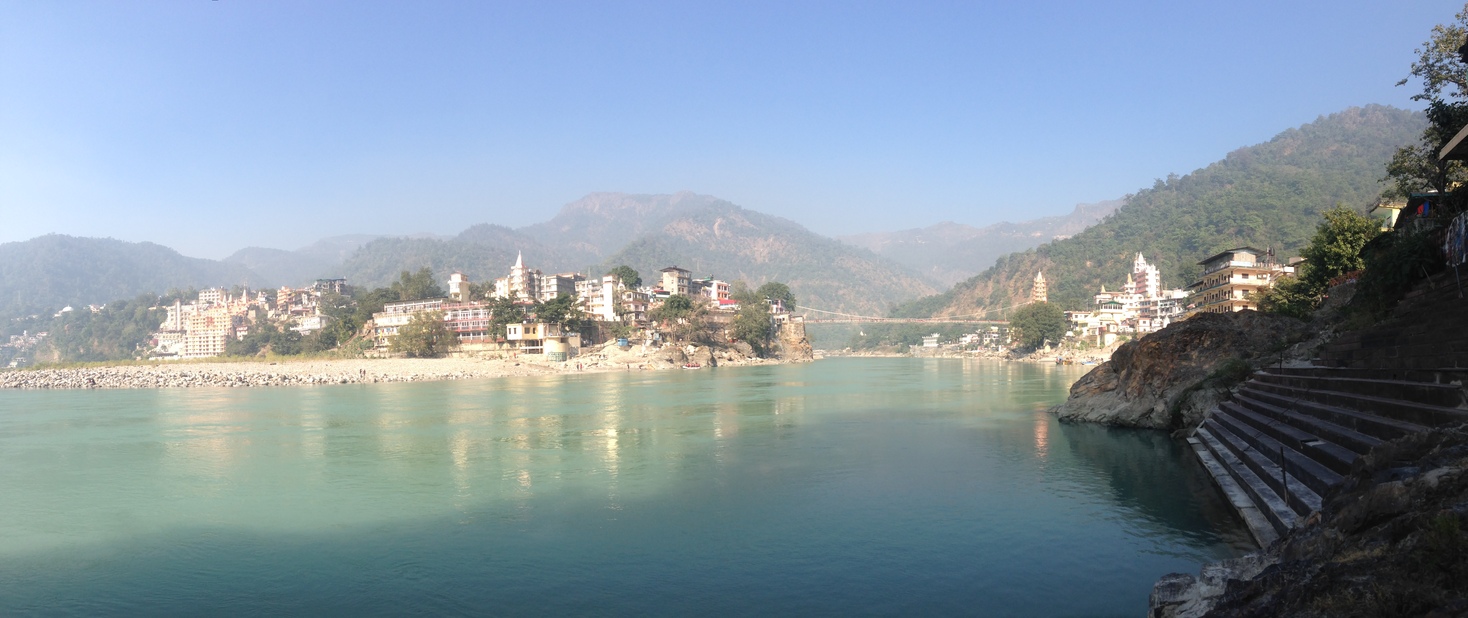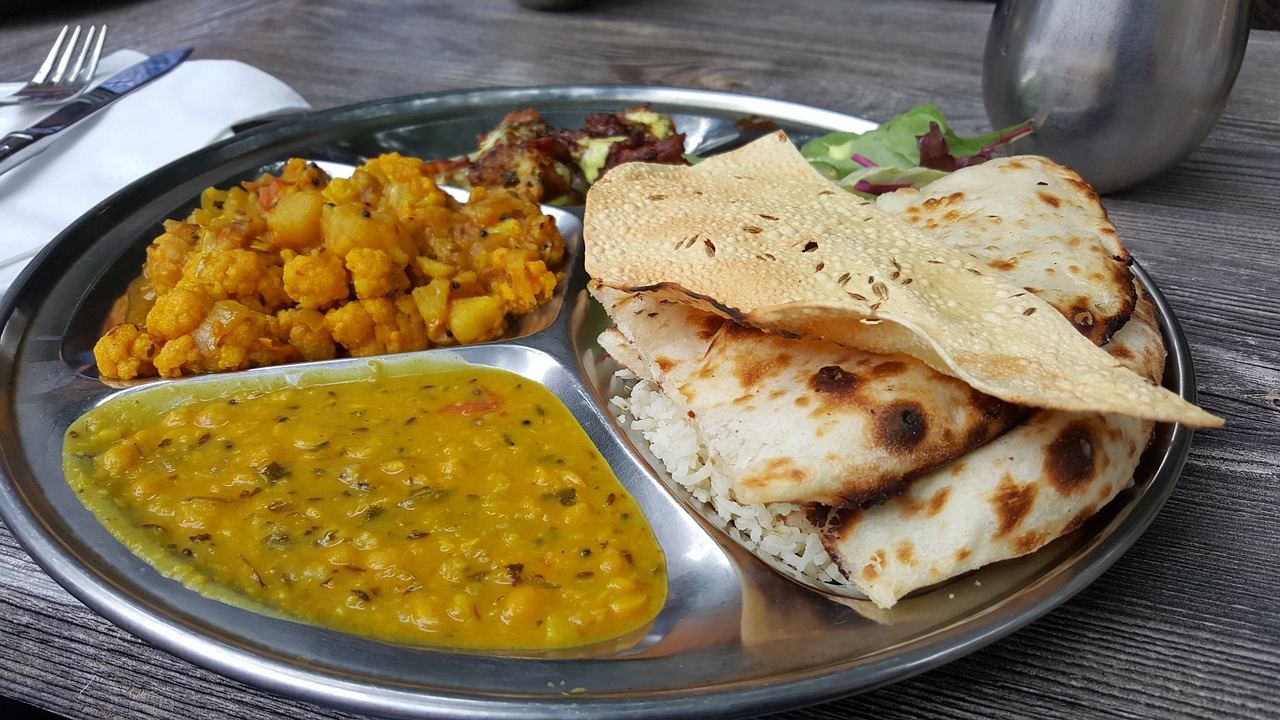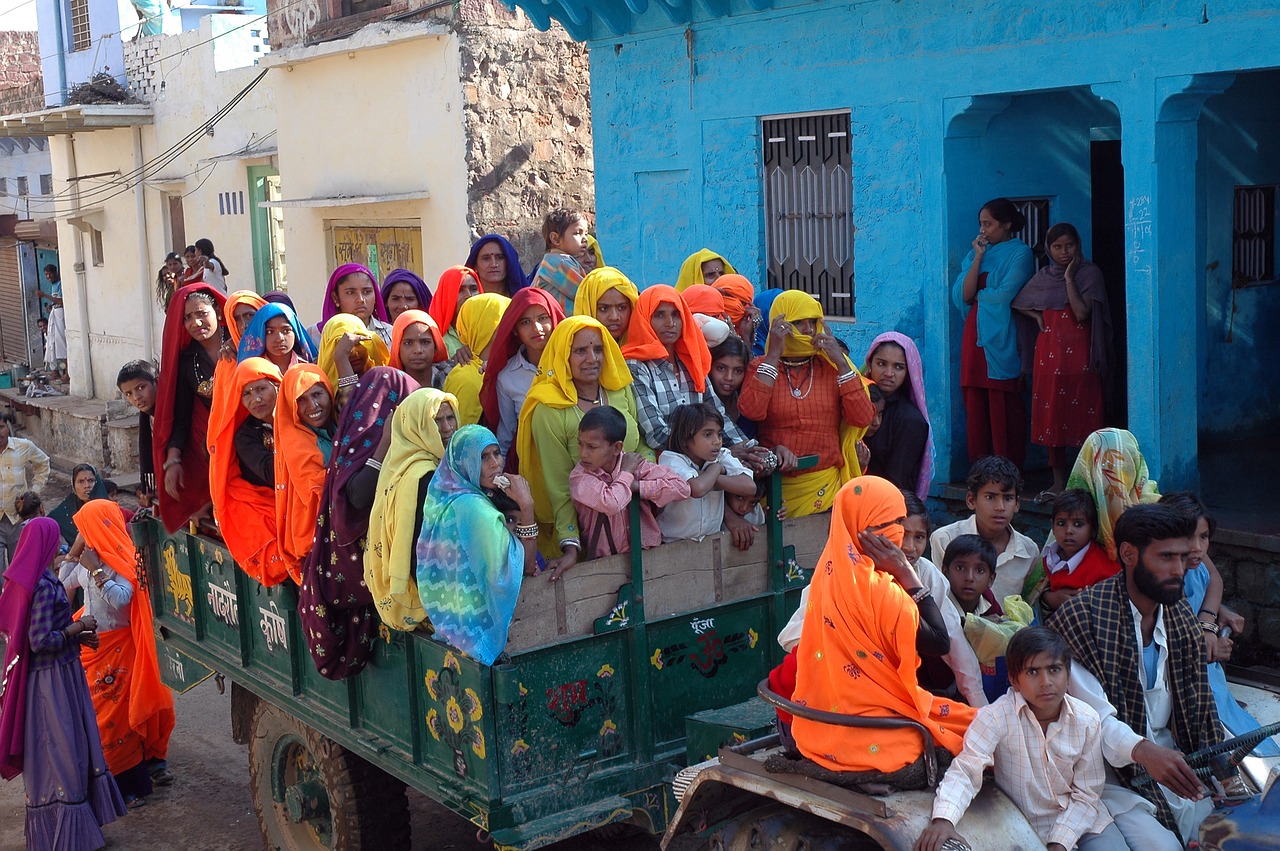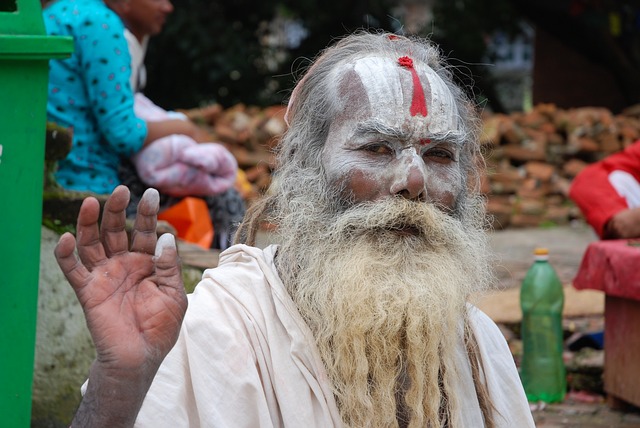10 things to think about when going to yoga teacher training in India

Many of you might think of going to India, experiencing a different culture, and perhaps, getting your certification as a yoga teacher. If you’ve never traveled to Asia before, you could be a little surprised (shocked) upon your arrival, by how different, from your home country, India can be.
There are many amazing experiences to be had while visiting Indian continent but it is probably not a bad idea to make some mental and physical preparations ahead of time.
1. What will you wear?
If you are planning to visit northern regions of India in a winter time, you might be surprised to discover that it can get quite cold there, especially at night. The Himalayas are not far away and while it still might be very comfortable during a sunny day, evenings can be chilly.
Part of the problem is that Indian buildings usually lack any kind of insulation and heating. As a result, even 10-15 degrees Celcius can seem quite unpleasant when sitting in a room in your summer garments.
It is easy and inexpensive to buy something warmer to wear (simple blankets are frequently worn as an outer layer). However, if you are particularly sensitive to cold, think of what to take with you in terms of a warm sleeping bag or warm clothes.
Alternatively, you can practice at home getting slowly adapted to cooler conditions by wearing fewer layers, keeping the windows opened at night and taking cold showers daily (more of a yogic style preparations).
Going to the south of India you can be exposed to higher levels of heat and humidity which requires lighter, breathable clothes and comfortable sandals of sorts. In warm, damp areas, mosquitos can be a problem, especially at night. Many places where you can stay usually provide mosquito nets suspended above your bed or installed in the windows. It is not a bad idea though, to have your own (they can be very small and light) since Indian quality can sometimes be a little lacking (read - holes in the net) :-)
2. What will you eat and drink?
You might have heard stories of digestive problems when visiting India.
While Indian food is AMAZING, the conditions for food preparations can be extremely unhygienic (according to the Western norms).

Generally, street foods should be approached with a dose of skepticism and suspicion, on the other hand, when you stay in the country for an extended period of time, it will be difficult to avoid all the potential culinary dangers.
Trying to eat the foods you are familiar with like pizza, pasta etc. can be a disappointing experience because it will usually be just an interpretation of what a dish is “supposed” to be according to an Indian cook’s imagination.
Indian cuisine has so much to offer that we should not have any difficulty in finding dishes that we will love.
Many savvy travelers advise eating “the way locals do” which means trying to include different regional dish combinations, spices etc. The reasoning behind it is that, for example, using certain local herbs improves digestion, some potent peppers can have parasite killing properties, turmeric may have some antibacterial attributes.
I would not recommend this approach to water drinking in India. Stick to bottled water unless you know of a good source of properly filtered water.
Don’t drink the water served in pitchers in most restaurants!
It is not a bad idea to bring with you to India some anti-diarrhea pills. Hand sanitizer also comes in handy.
Some yoga schools and courses follow the philosophy of serving their students very “sattvic”, yogic meals (it also happens to be very low cost), throughout the duration of the course, resulting in the considerable weight loss and sometimes feelings of low energy and strength.
It is good to inquire what the organizers have planned so that there are no unpleasant surprises in that regard.
3. What will you breathe?
The air pollution in India is considered to be one of the worst in the world. Of course there are many rural areas where it is not as bad as it is in Delhi but in general, there can be a lot of dust in the air just because of the quality of the roads there. You might experience temporary lung’s irritation upon your arrival and sometimes bringing a simple pollution mask can give you a much-needed relief.
4. What will you hear and see?
The way Asian drivers communicate on the roads (continuously honking the horns) can be quite demanding on unaccustomed ears and wearing headphones (no music on) can be helpful. It is not a good idea to listen to music on busy Indian roads because we need all our senses to avoid the potential and very real possibility of collision with a scooter or a car.
Ear plugs can be useful at night if we stay in a busy part of the city or have noisy roommates but when walking a crowded street always keep your eyes peeled.
Keep your wallet and passport in a secure place (the outer pocket of your backpack is not one of them).
It is not rocket science that a female walking solo at night is not a particularly good idea even in a “yogic” environment in India. There’s been an influx of sex-related crimes in the recent years (the numbers of reported rapes in Delhi tripled in the last five years).
Keep your ears muffled and your eyes open!
5. What will you buy?
When in India, you notice very soon that there is a big problem with trash disposal. In most places, there are no systems providing any solutions. The situation is compounded by the world’s switch to using plastic containers and packages.
In the past, throwing an old jar or a box in the backyard was not a big deal. Soon the decomposition process began and garbage was reabsorbed in a natural way. The introduction of nearly indestructible plastic changed it all. India is littered with trash. Cows, pigs and other animals graze in these garbage fields and sometimes die from ingesting plastic.
What we - the visitors - buy has a tremendous effect on the local environment.
Therefore try to buy foods that are not wrapped in plastic, beverages that can be poured into your own container, refill your water bottle from a good filter in your school or nearby ashram.
Support biodegradable products and their manufacturers and make others aware of how they can influence the supply by the conscious choices they make.
6. What will you think?
Visiting another country and experiencing another culture can be a very enriching experience.
In order to respect and protect old cultures that we came to explore, it is important to remember that things can be done in a different way in a foreign country.
Bathing in a Holy Ganga river in a bikini, wearing short skirts, revealing t-shirts, sleeveless tops, it can all be perceived as an expression of a lack of respect for local customs. Being overly sexual publicly, whether alone or with your partner, kissing, hugging, sometimes even holding hands can attract a lot of unwanted attention.
Try to be mindful of the different perceptions when going to yoga classes and yoga schools and wear comfortable outfits that you might not necessarily choose back home but that are more appropriate in the local environment (a bit more baggy and modest).
Be aware of what the local ways are remembering that what might be the most natural and “normal’ thing to do in your country, could be unacceptable in India.
7. Where will you find your private space?
India is the second (after China) most populated country in the world with more than 1,3 billion people living there. Privacy is rare and may not be understood the same way you understand it (read paragraph #6). Be prepared to be surrounded by other people almost all the time. Walking on the street can be a much more tactile event than what you are used to. People are used to being in the crowd, squeezing through narrow passages full of pedestrians and traveling in the overloaded trains.

Sometimes, sitting in a cafe with your headphones in your ears and your favorite music on can be the only private moment you will be able to have.
8. How will you learn?
When you go to study yoga in the very place where it came from, you might be surprised by the way yoga is perceived in India itself. The understanding of yoga can be very different here compared to what you have grown to think about yoga back home. So is the way it is taught.
It is quite common that the instructions will be very vague or rudimentary and the class itself will be interspersed with rituals and/or some forms of esoteric or religious practices.
Yoga has become a great business in the west as well as in the east. There are many copycat teachers and “fake” schools or courses and it would be prudent to check the recommendations for the school or teacher in as many sources as possible, ideally with someone who has had a hands-on experience in the past. TopYogis.com is one such place.
9. How will you react?
Expecting instant service in a restaurant, usable directions to a place you are looking for or some logical solution to a particular problem (seen in the light of our own brand of logic) might be something we might be waiting for all in vain since the native approach might differ greatly from what we are used to.
You will have a lot of opportunities to practice patience, tolerance, self-restraint and mental and physical endurance. Try to let go of your assumptions. Focus on positive and enjoy the richness of the experience.
10. How will you confront a challenge?

Yoga practice in India is permeated with a guru-disciple relationship concept. The teacher’s unquestionable authority is rarely challenged and the student’s uncomfortable questions are usually attributed to his or her excessive ego. While this might be the case at times, there are plenty of situations that warrant students’ apprehension and caution.
One of those situations is yoga posture adjustments. Some teachers use them. Others don’t.
Some are delicate and considerate. Others can be forceful and intense.
If you have any doubts about your body’s ability or the teachers’ approach - be firm in making it clear that you do not wish to be adjusted.
The same goes for ANY practices that you are not comfortable with. Whether it is a difficult, acrobatic asana, “kundalini rising” private session, or a selfie request on the street - practice assertiveness and remember that you always have a right to say”no”!
And of course, one of the best things you can do to prepare yourself for Indian experience is to sign up for a school or course with good peer recommendations! Browse our catalog of schools, teachers, and courses around the world, pick the course that you like and sign up for it right on our website!
Get more information on how to prepare for travel in India in our Yoga Guide to Rishikesh
